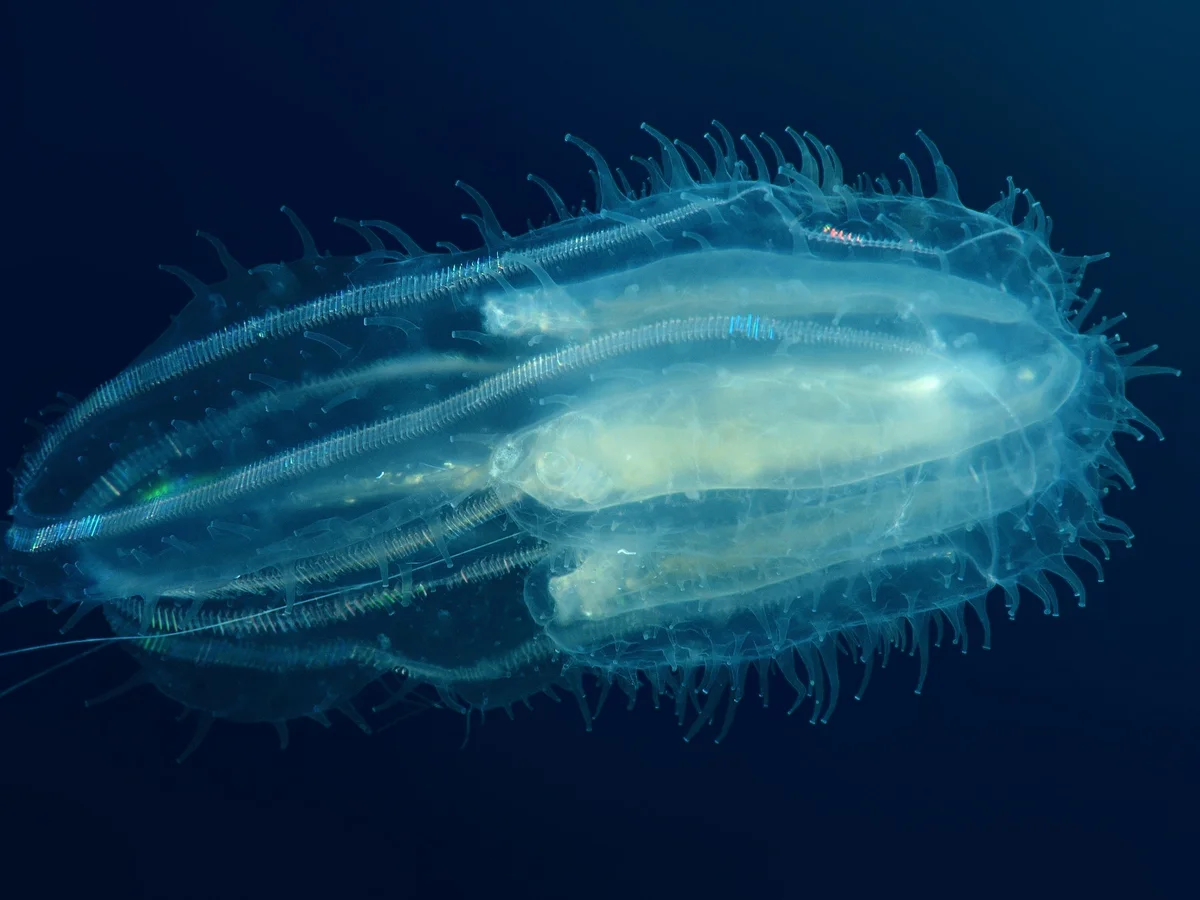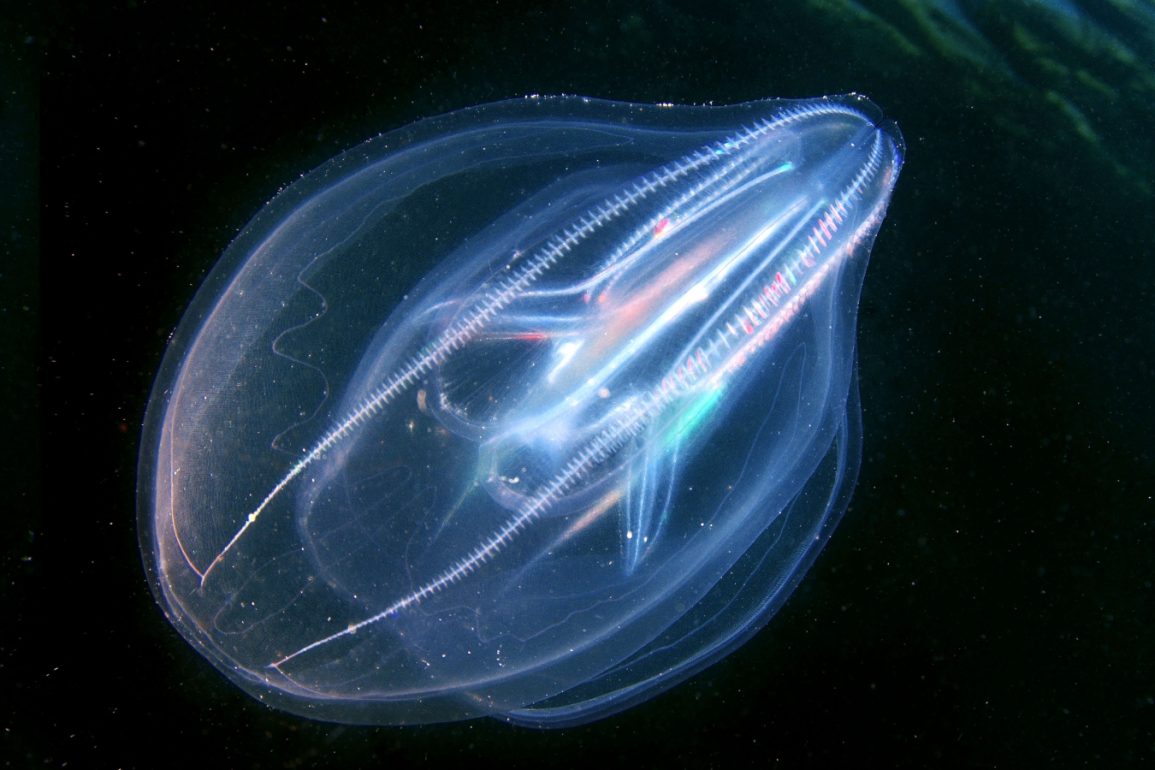A new study reveals that comb jellies, also known as ctenophores, can fuse together when injured, creating a single entity with merged nervous systems and stomachs. This unique behavior, previously unknown in any other species, was discovered accidentally in a laboratory by researchers studying warty comb jellies (Mnemiopsis leidyi).
The comb jellies, which are ancient, gelatinous deep-sea creatures, are known for their translucent, glowing bodies and unusual nerve cells, but this fusion capability adds another layer of intrigue to their biology.
The discovery occurred when researchers noticed one jellyfish was missing from a tank, only to find an unusually large individual that turned out to be two jellies fused together. To further investigate, the team conducted an experiment by removing small sections from 20 individual comb jellies and pairing them up.
Nine of the pairs successfully fused within 24 hours, with their nervous systems integrating quickly, allowing them to respond to external stimuli as one organism. This rapid neural connection is thought to be a result of the unique way comb jellies’ nerve cells link up.

Further experiments showed that not only did their nervous systems merge, but their stomachs also became interconnected. Researchers fed the fused jellies fluorescent shrimp and observed the food moving between their two stomachs, demonstrating that their digestive systems were also operating as one.
Although these fused jellies behave as a single organism, they still retain separate DNA, meaning they can’t pass this fused morphology onto future generations. Nonetheless, the researchers refer to them as “single entities” in the study.
This phenomenon of comb jellies fusing is likely rare in the wild, where injured individuals would need to be in close proximity for fusion to occur. Comb jellies are capable of regenerating lost body parts and even reversing aging, so fusing with other individuals may not be a common survival mechanism. Researchers suggest that this behavior might have been previously overlooked due to its rarity in the ocean depths, but it provides new insight into the evolutionary biology of these creatures.
The study ended after three weeks due to lack of funding, but the fused jellies were still alive, suggesting they might survive for much longer. The team also speculates that more than two jellies could potentially fuse together, though this has not yet been tested. Researchers are now preparing to study another species of comb jelly, Bolinopsis mikado, to determine if they share this remarkable ability to merge with one another when injured.

